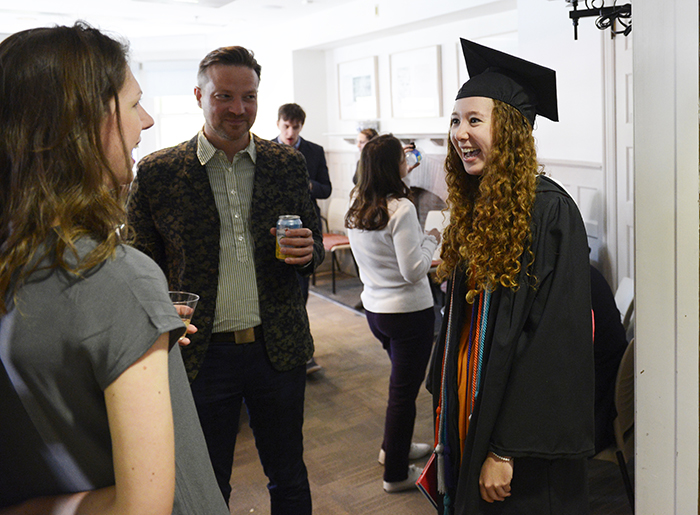
The History of Art explores the range of objects and monuments made from prehistory to the present day. It emphasizes the study of visual arts as a means of understanding intellectual and cultural history of humanity. Renaissance palaces, Hiroshige prints, modern mosques, Etruscan tombs, Mira Nair films, Barnett Newman’s zips, and much more, are all brought into focus in the Jaffe Building.
Penn’s Department is an internationally renowned leader in the history of art and architecture, with a long, distinguished record of teaching, mentoring, and research. The faculty are committed to innovative instruction, and they work closely with students to develop skills in the interpretation of art and visual culture. Special excursions to museums allow students to examine paintings, sculptures, prints, and manuscripts first hand, and each year seminars organize exhibitions at the Arthur Ross Gallery or the Institute of Contemporary Art, and other venues (see Halpern-Rogath Seminars).
The Department also fosters programs with local galleries and museums that can prepare interested students for a fulfilling career as a scholar, curator, or gallery or museum professional. The curriculum provides a solid foundation for a general liberal arts education and careers in communications, public relations, and other fields where engagement with images and texts is paramount. Courses in the history of art also contribute to majors in visual studies, literature, history, religion, area studies, cinema studies, studio art, among others.
Students may select from a wide array of courses:
- 1000-level courses are broad introductions covering great geographic and/or temporal ranges and are suitable for all students.
- 2000-level courses treat a single artistic period, movement, medium, or locale. While focused, they are good introductory courses for most student levels.
- 3000-level courses follow a seminar format and focus on an artistic theme, issue, medium, or problem. These are most appropriate for juniors and seniors but may also be suitable for sophomores (check requirements for individual courses).
- 4000-level courses follow the format of 200-level courses and are primarily intended for junior and senior majors.
- 5000-level courses follow a seminar format. These are open to undergraduates and graduate students.
The following courses are particularly recommended as introductions to the field:
- ARTH 1010: Intro to Art History: Prehistory to Early Renaissance introduces students to the arts of Ancient Egypt, the Middle East and Iran, the Mediterranean Bronze Age, the Greek and Roman worlds, the Middle Ages, Islamic civilizations, and the European Early Renaissance. (III)*
- ARTH 1020: Intro to Art History: Renaissance to Contemporary presents the visual arts--including painting, sculpture, print culture, and new media such as photography, performance and installation art--in Europe and the United States from 1400 to the present. (III)*
- ARTH 1030: Arts and Civilizations of East Asia introduces the arts and civilizations of China and Japan, from prehistory to the present. (III and cross-cultural analysis)*
- ARTH 1040: The Art of India and Southeast Asia serves as a broad introduction to more than two thousand years of art produced by the great cultures of southern Asia. (III)*
- ARTH 1060: The Architect and History serves as an introduction to two thousand years of the built environment, from the Middle East to the United States, and includes practical design experiments, films, and excursions. (IV)*
- VLST 1010: Eye, Mind, and Image, analyzes the philosophy and science of perception. For more information on the Visual Studies Program, see: Visual Studies Department



